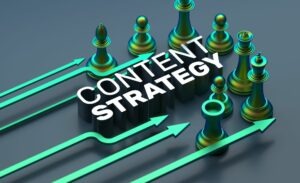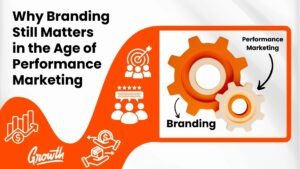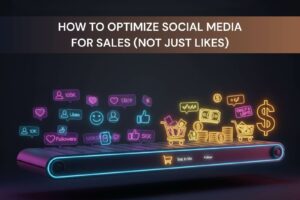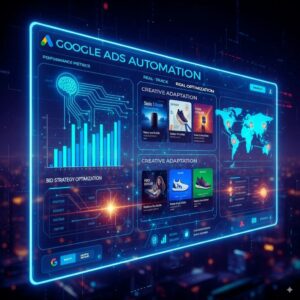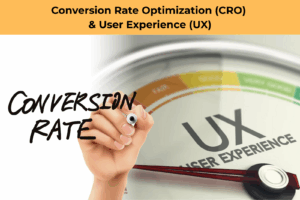Marketing in 2025 feels like trying to hit a moving target while blindfolded. Just when you think you’ve figured out the latest algorithm update, three new AI tools launch, another social platform pivots its entire strategy, and your audience has moved on to something you’ve never even heard of.
While everyone else is still figuring out last month’s update, successful marketers are already testing what’s coming next.
We’ve spent months analyzing what’s working (not just what marketing gurus are talking about) and identified ten trends that are genuinely moving the needle. These aren’t pie-in-the-sky predictions or recycled advice from 2023. These are the strategies that smart businesses are using right now to connect with customers, drive sales, and leave their competitors wondering what hit them.
If you’re bootstrapping a startup or managing campaigns for an established company, these insights will help you stop playing catch-up and start setting the pace. Ready to stay informed and stay ahead? Now you can (at least until tomorrow…just kidding). Let’s jump in!
1. AI-Powered Personalization
AI personalization is finally getting creepy good (all hail our AI-overlords!). But most businesses are still using it like a sledgehammer when they need a scalpel.
Netflix knows you have questionable taste in reality TV, and Spotify somehow nailed that you’re going through an early 2000s emo phase. They use these tools to keep users engaged and hooked. But here’s what’s new in 2025…
AI is now personalizing entire customer journeys in real-time.
We’re talking about email subject lines that adapt based on when someone typically opens emails, website layouts that shift depending on how a visitor navigates, and ad copy that rewrites itself based on what’s resonating with similar customers that week.
The brands winning right now are using tools like Dynamic Yield for on-site personalization, Klaviyo‘s predictive analytics for email timing, and even simple things like personalized video messages through platforms like Vidyard.
Now is the time to experiment with AI. But be sure to start small. Pick one touchpoint, maybe your email welcome series or your homepage for returning visitors, and test dynamic personalization there. Don’t try to personalize everything at once, or you’ll end up with a Frankenstein experience that feels robotic instead of human.

2. Voice Search Optimization
Remember when everyone was freaking out about voice search back in 2018? “Alexa is going to change everything!” Well, it took a while, but voice search finally hit its stride in 2025 and it’s not just people asking about the weather anymore.
People are now using voice search for complex, buying-intent queries. Instead of typing “best pizza near me,” they’re saying “Hey Google, where can I order a large pepperoni pizza that delivers in under 30 minutes and accepts Apple Pay?” That’s a completely different optimization game.
The brands crushing voice search right now are optimizing for actual conversations. Take local service businesses, plumbers, dentists, contractors, they’re dominating by creating content that answers the exact questions people blurt out when they’re in panic mode at 11 PM. Here’s a quick list of what’s working now to get your creative juices flowing…
- FAQ pages that sound like real conversations, not corporate speak
- Location-specific content that includes natural phrases like “near downtown” or “close to the mall”
- Featured snippet optimization (since voice assistants pull from these)
- Fast-loading mobile sites (because voice searches happen on phones 80% of the time)
If you want to improve your voice search game, here’s an insider tip…
Record yourself asking questions about your business out loud, then optimize for those exact phrases. You’ll be surprised how differently you speak versus type.
And last, a great example to follow for this type of optimization is Domino’s Pizza. They’ve enabled voice ordering and making the purchasing process simpler and faster for customers.
3. Short-Form Video (Because Attention Spans Are Dying)
These days, if your video is longer than 60 seconds, you’ve already lost half your audience. In 2025, short-form video has basically taken over the entire internet. TikTok proved it, Instagram Reels copied it, and YouTube Shorts is desperately trying to keep up.
But there is one way most brands are screwing up (hopefully this isn’t you). They’re treating short-form videos like mini commercials. Wrong move. The content that’s working feels like it was made by your friend who happens to know a lot about your industry.
Look at what’s crushing it right now. Duolingo’s TikTok account is run by someone who clearly has never been in a corporate marketing meeting. Ryanair’s social team roasts their own customers (and somehow people love them for it). These brands figured out that authenticity beats production value every single time.
Here’s a quick rundown of what’s working to give you a head start:
- Behind-the-scenes content that shows real people, not polished talking heads
- Quick tutorials that solve actual problems (not “5 tips for success” stuff)
- Trend-jacking that feels natural, not forced
- User-generated content that you amplify instead of trying to recreate
The best part is, you don’t need a film crew or expensive equipment. The most viral marketing videos this year were shot on phones by people who understood their audience better than their cameras.
Start with one platform, post consistently for 30 days, and see what resonates. Then double down on what works instead of spreading yourself thin across every platform.
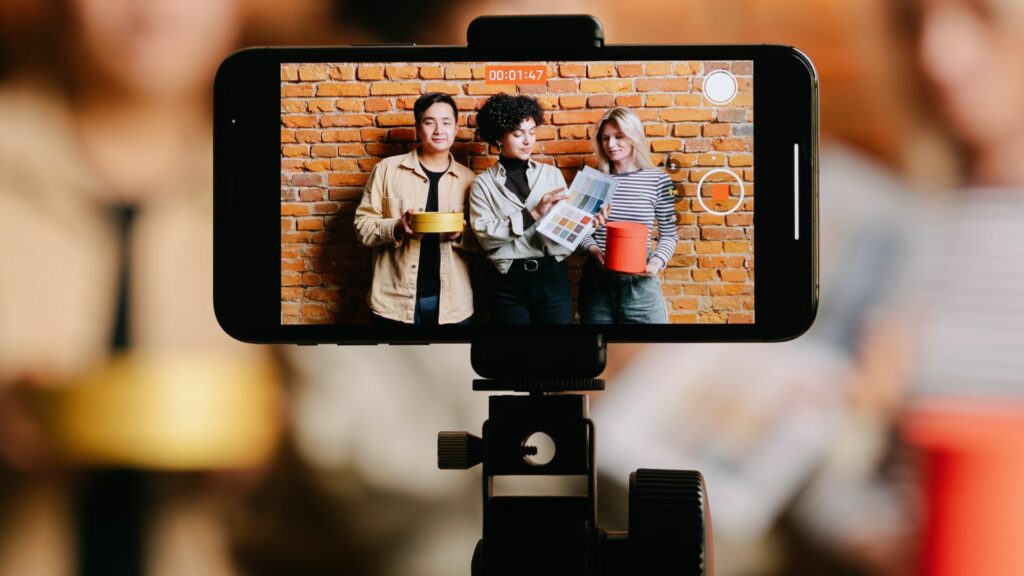
4. AR Finally Gets Its Moment (And It’s Not What You Think)
Augmented reality spent years being the “technology of the future” that never quite arrived. Well, 2025 is different. AR is solving real problems that make people actually want to buy stuff.
Here’s the big change…
AR got practical. Instead of gimmicky filters, brands are using AR to answer the question every online shopper has: “But what if it sucks when I get it home?”
IKEA nailed this years ago with their furniture placement app, but now everyone’s catching on. Sephora lets you test makeup without getting your hands dirty. Warby Parker lets you try on glasses without leaving your couch.
But the real game-changer? QR codes on packaging that unlock AR experiences. Scan a wine bottle and get pairing suggestions. Point your phone at a piece of exercise equipment and instantly see workout tutorials. It’s turning physical products into digital experiences.
What’s working in 2025:
- “Try before you buy” experiences that reduce return rates
- Interactive product demos that replace boring instruction manuals
- Location-based AR for retail stores (scan a shelf, get reviews and comparisons)
- Social AR filters that customers share (not just branded face distortions)
If your product benefits from being seen in context (furniture, clothing, makeup, home improvement) AR should now be your go-to. Start with simple try-on experiences and build from there.
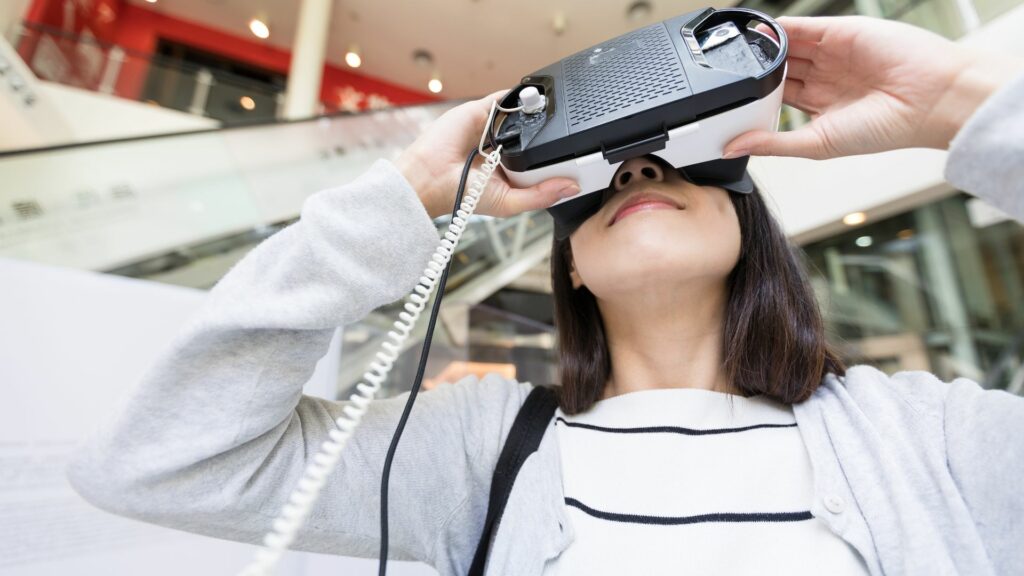
5. Sustainability and Ethical Marketing
Sustainability marketing in 2025 has a major problem…consumers can smell BS from a mile away, and they’re not afraid to call you out on social media.
The days of slapping a green leaf on your logo and calling it “eco-friendly” are over. People want receipts. They want to know exactly what you’re doing, how you’re measuring it, and why they should believe you’re not just jumping on the bandwagon.
Patagonia didn’t become the poster child for sustainable marketing by accident. They literally tell people not to buy their products unless they need them. They repair gear for free. They sue the government over environmental issues. That’s not (just) marketing, that’s living your values so loudly that the marketing writes itself.
But smaller brands are getting it right by getting specific. Instead of vague claims about “reducing our carbon footprint,” they’re saying “we switched to renewable energy in our warehouse, cutting emissions by 40%.” Instead of “eco-friendly packaging,” they’re explaining “our mailers are made from recycled ocean plastic and dissolve in water.”
If this is something that interests you, here’s a few quick tips to ensure you get it right.
Use transparency reports that show actual numbers, not just good intentions. Record behind-the-scenes content showing your sustainable practices in action. Set up partnerships with verified environmental organizations (not made-up certifications). And be sure to always use honest communication about what you’re still working on.
Also, if sustainability isn’t actually part of your business model, don’t fake it. Focus on what you genuinely do well…customer service, quality products, and supporting local communities. Authenticity beats trendy messaging every time.
6. The Evolution of Influencer Marketing
The influencer game has completely flipped. While brands used to chase follower counts like they were collecting baseball cards, smart marketers realized that 10,000 engaged followers beats 100,000 bored ones every single time.
And micro and nano influencers are dominating. A beauty brand gets better ROI from 20 creators with 5,000 followers each than one mega-influencer with a million. Why? Because when @skincare_sarah_23 recommends a moisturizer, her 3,000 followers actually trust her. When a celebrity posts about it, everyone knows they’re getting paid.
The real shift in 2025 is long-term partnerships over one-off posts. Brands are hiring creators as actual brand ambassadors for months or years, not just single campaigns. These creators become genuine advocates who know the products inside and out.
Look at how smaller DTC brands are crushing it…they’re finding creators who already use their products organically, then formalizing those relationships. No fake enthusiasm required.
If you’re ready to hop into influencer marketing, stop looking at follower counts first. Check engagement rates, audience overlap with your customers, and whether their content style matches your brand voice. A creator with 2,000 engaged followers in your exact niche is worth more than a lifestyle influencer with 50,000 random followers.

7. Interactive Content
People crave engagement and interactive content is filling that gap perfectly. Instead of just consuming information, your audience wants to participate, explore, and get personalized results.
While interactive content like the standard BuzzFeed quizzes aren’t as popular as they were in the past, (though “Which pasta shape are you?” still gets ridiculous engagement), smart brands are using interactive elements to solve real problems and collect data that matters.
Take quiz funnels that help customers find the right product. Skincare brands use diagnostic quizzes to recommend routines. Mattress companies help you find your ideal firmness. Home improvement stores guide you through project planning. Some may see these as simple gimmicks, but really they’re replacing sales conversations.
Building on this idea, the real winners are going deeper. Interactive calculators, assessment tools, and configurators that provide genuine value while capturing lead information. A mortgage calculator that emails you personalized rate quotes. A fitness assessment that creates a custom workout plan. A budgeting tool that recommends financial products. These are all great ways to improve your interaction rates.
Remember to make it valuable first, interactive second. If your quiz result is just “You’re awesome, buy our stuff,” you’ve missed the point. Give people insights they can’t get anywhere else, and they’ll gladly share their contact info for it.
8. Privacy-Centric Marketing
iOS updates killed Facebook’s tracking superpowers. Chrome is phasing out third-party cookies. Privacy laws are popping up faster than terms of service updates that nobody reads.
But smart marketers aren’t panicking, they’re adapting. The brands thriving right now are the ones who figured out how to build genuine relationships instead of relying on creepy tracking.
First-party data is the new gold. Email lists, customer surveys, loyalty programs, and direct website interactions are worth more than any pixel ever was. Brands like Starbucks built entire ecosystems around their app, collecting purchase data, preferences, and behavior patterns that competitors can only dream of.
In addition, the winners are getting creative with data collection. Interactive quizzes that provide value while gathering preferences. Product reviews that reveal customer priorities. Community forums where people voluntarily share their interests and challenges.
Stop trying to work around privacy changes and start working with them. Transparent data practices are now becoming competitive advantages. When customers trust you with their information, they’ll share more of it willingly.
9. Omnichannel Integration
Your customers don’t think in channels, they think in experiences. They research on their phone during lunch, compare prices on their laptop at home, then buy in-store on the weekend. If your marketing doesn’t connect these dots, you’re losing sales at every transition.
Omnichannel means making sure a customer can start their journey anywhere and pick it up seamlessly somewhere else. When it’s done right, it feels invisible.
Sephora cracked this code years ago, but their execution keeps getting better. Scan a product in-store with their app, and you get reviews, tutorial videos, and personalized recommendations. Buy online, return in-store without friction. Get beauty advice from their AI chatbot, then book an in-person consultation. Every touchpoint builds on the last one.
It’s all about connecting those dots (data). Your email team needs to know what someone browsed on your website. Your social ads should reflect what’s in their cart. Your customer service team should see their purchase history and previous conversations.
If you’re uncertain whether you’re doing this right, ask yourself this: Can a customer start shopping on Instagram, research on your website, get help via chat, and complete their purchase in-store without explaining their situation three times? If not, you’ve got work to do.
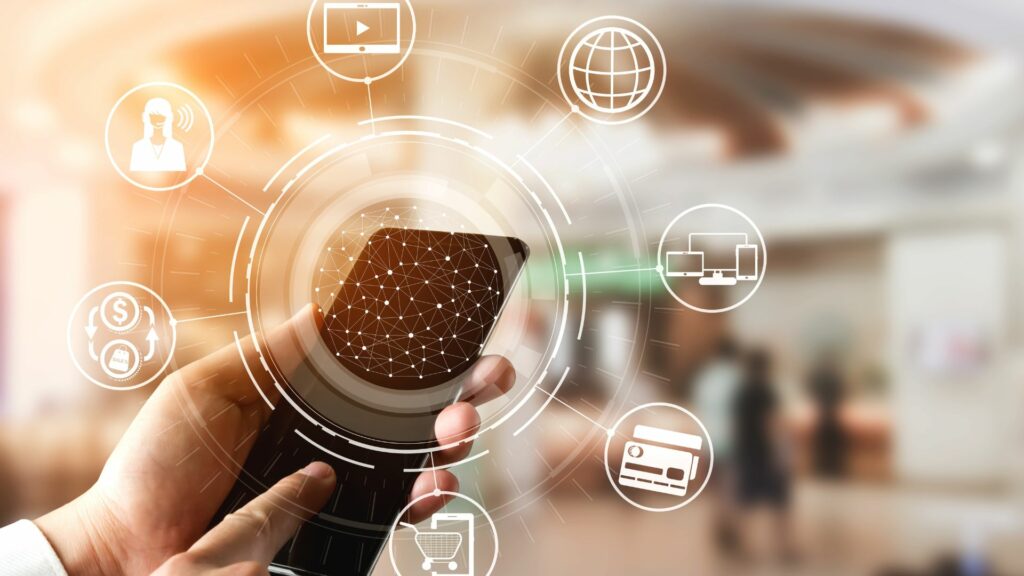
What Matters in 2025
You don’t need to master every trend on this list to succeed in 2025. Pick the two or three that make the most sense for your business and your customers, then execute them really well.
The brands winning right now aren’t trying to be everywhere, they’re being exceptional where their customers spend time. They’re not jumping on every new platform or tool. They’re doubling down on what works and testing what’s next.
Start with your customers. Where are they struggling? What would make their experience with your brand better? Then use these trends to solve those problems, not just to check boxes on a marketing strategy document.
Ready to get started? Pick one trend from this list. Test it for 30 days. Measure what happens. Then either double down or move on to the next one. Marketing in 2025 rewards focused execution over scattered experimentation.
Need help figuring out which trends make sense for your business? Our team at Digital Time Savers specializes in cutting through the noise and building marketing strategies that work.
We’ve helped dozens of businesses identify the right opportunities and execute them without getting distracted by every shiny new trend. If you’re in need of help, contact us today and let’s talk about what 2025 could look like for your brand.
FAQ
Which trend should I focus on first?
AI-driven personalization should be at the top of your list. Start simple: use AI tools to personalize your email subject lines or recommend products based on browsing behavior. If people can’t find you when they search, tackle voice search optimization next. If your audience lives on TikTok but you’re still posting long-form content, dive into short-form video. Don’t chase what sounds coolest, chase what your customers need, and AI can help you figure out what that is.
I’m a small business. Can I really compete with these trends?
Absolutely. In fact, you have advantages that big brands don’t. You can move faster, test things without committee approval, and build genuine relationships with your audience. Start with one platform, master it, then expand.
Will increased privacy concerns limit marketing effectiveness?
Nope, they’re just killing lazy marketing. The brands panicking are the ones who relied on sketchy tracking instead of building real relationships. Focus on creating content people actually want to engage with, and they’ll gladly share their information for better experiences.
How critical is video content in 2025?
If your audience is under 50, very. If they’re over 50, probably still critical. Video is how people prefer to consume information now. But here’s the good news, you don’t need Hollywood production values. Authentic beats polished every single time.
Is influencer marketing still effective in 2025?
When done right, absolutely. Skip the mega-influencers and find creators who genuinely love your product. A micro-influencer with 3,000 engaged followers in your niche will drive more sales than a celebrity with a million disengaged ones. Plus, they’re way more affordable.



